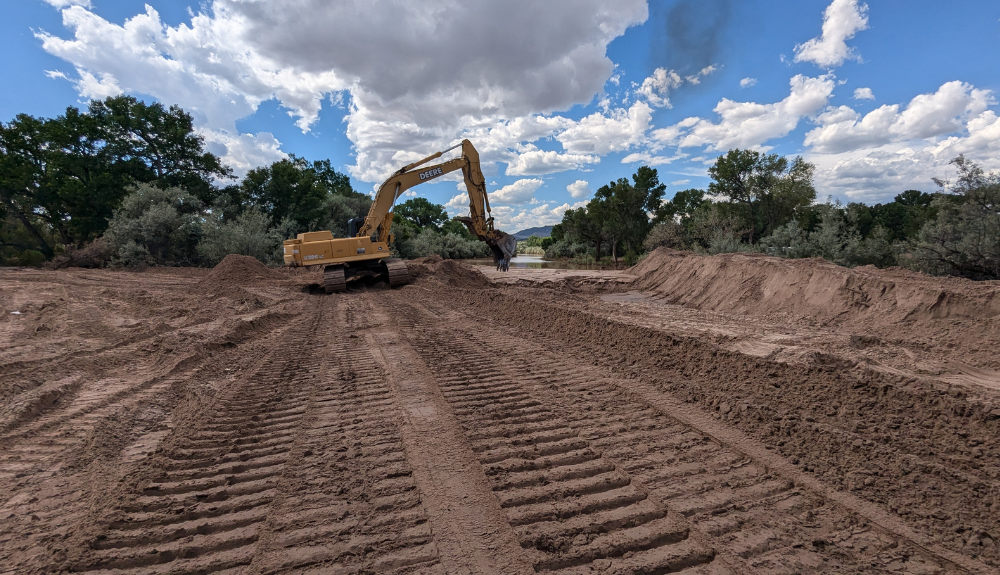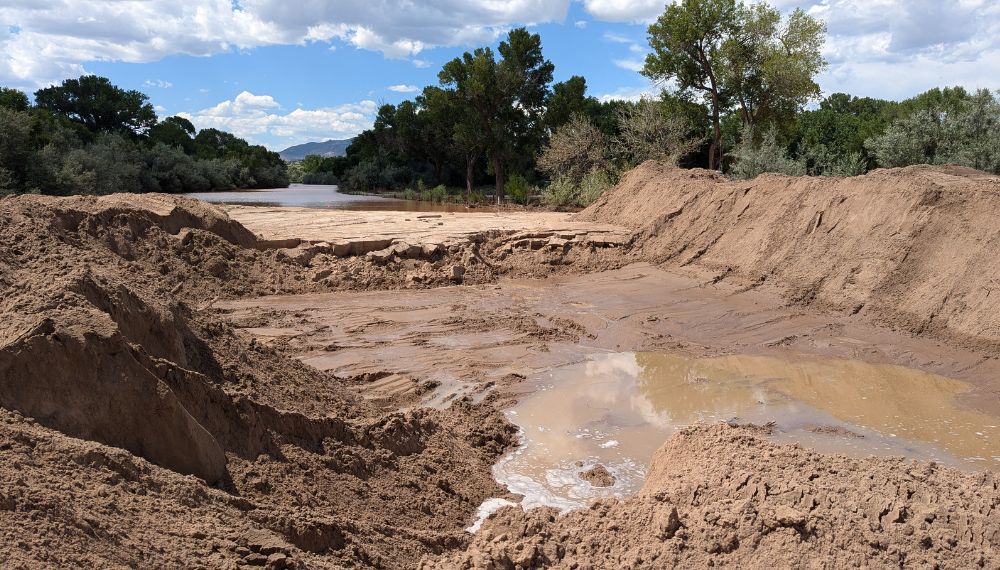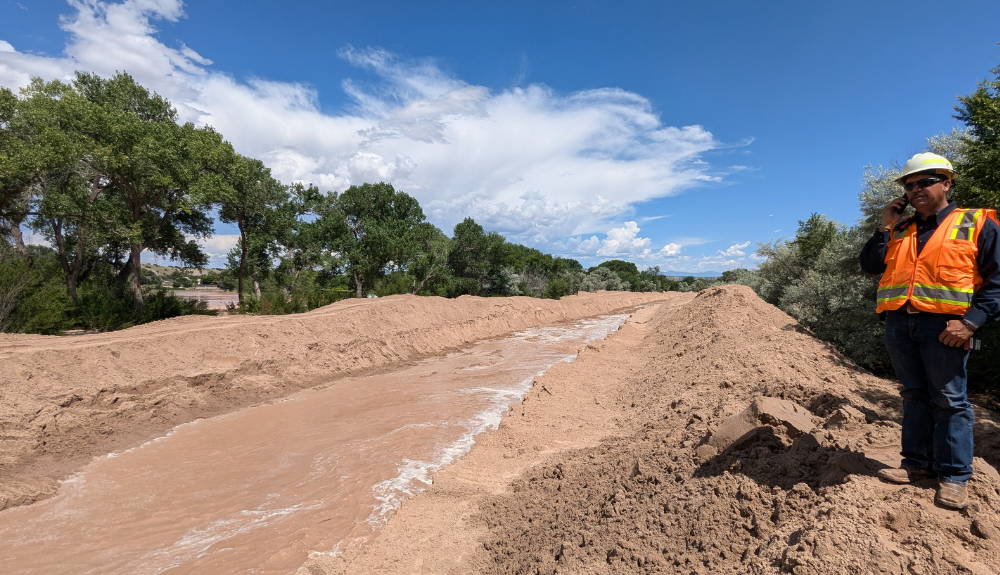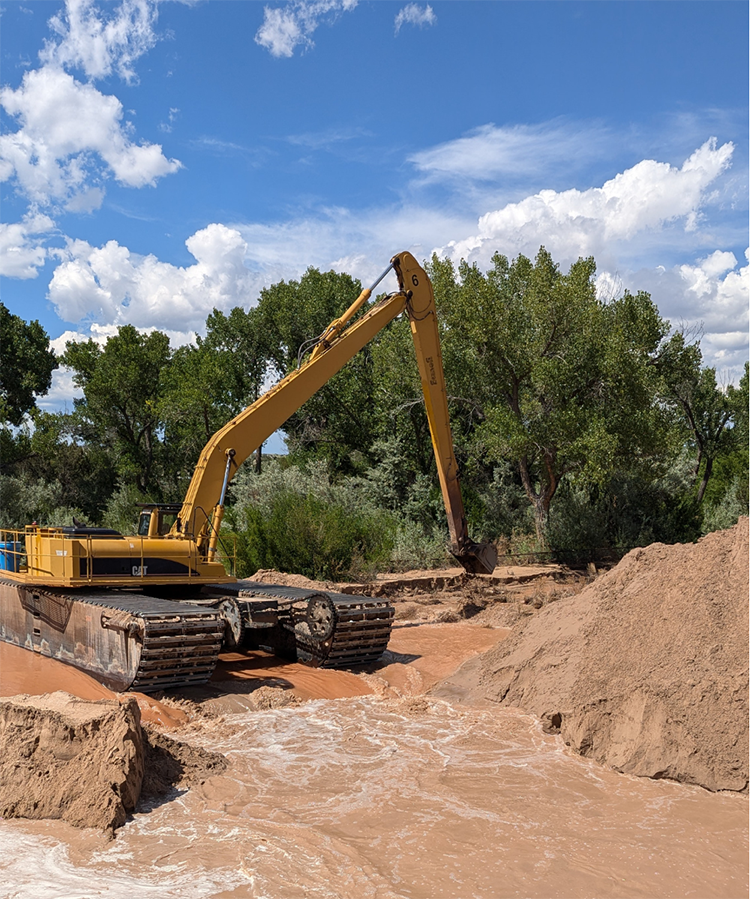|
By Carol Bondy
Last week via Email and Facebook Readers reported feeling tremors. The tremors were felt over the previous week. On 7/7 a stronger tremor was reported a little after 8PM. The tremors were along 554, on Blue Earth Trail, along 142, 155 and 156. Some of the comments "Yes I’ve felt them all. Someone suggested that they may be sonic booms? Last week I felt two in the middle of the night. They felt like they were coming from underground." Yes! I felt it just after 8pm last night (Sunday). Off 554 on 142. I felt two, up on 156 by plaza blanca. One was 11:08 pm felt a big quick jolt a couple weeks ago here on 155, my closest neighbor felt it too. Yes, we felt all of these off 554 We contacted our resident Geologist, Kirt Kempter. He had not heard of any. USGS did not report any on their website. USGS reported quakes that are 2.5 on the Richter scale. Lesser tremors can be reported and they will track. We also contacted Bureau of Reclamation to see if there was a chance these could be related to the work being done in the riverbed. The answer was no. So if you felt a quake you or feel one in the future you might want to report it. Click on "Felt Something Not Shown" On USGS Thanks John Yewell for sharing that link.
0 Comments
Last week we mentioned the shifting sands that felt like walking on a waterbed..
A short video clip showing the liquefying soil the crews battled digging the pilot channel (credit Field Manager Christopher Torres)
Daria Roithmayr
Images by Erik Roithmayr The Rio Chama is officially on its way back into its original channel as of Tuesday evening. Workers from the US Department of the Interior Bureau of Reclamation literally broke ground on Tuesday afternoon to let the waters flow into a mile of empty river bed in Medanales. The re-diversion team removed a plug of sand that separated the rediverted river and the original channel to redirect water into the dry river bed. Water that minutes before had been flowing onto local residents’ fields and buildings now rushed into the bed, filling the channel and even making waves as the flow increased.
Several weeks ago, the river had jumped its tracks when area flash floods had deposited an immense amount of silt into an area just north of the La Madera arroyo. The mound of sand plugged the river and has been pushing the river flow onto local residents’ fields ever since.
To guide the river back to its original channel, workers first removed sand at the bottom of the plug, where the original river and new river happened to be close to each other. Workers cheered as water began flowing into the river bed that had been dry for three weeks. To deal with the rest of the plug, the Bureau team used conventional excavators to dig a twenty-foot pilot channel through the sand. At 6:30 on Tuesday evening, the Bureau opened the pilot channel and water began to flow through the plug into the river bed.
The Bureau anticipates that water flowing into the formerly dry bed will carry downstream all the sediment from the plug. Plans are to monitor the pilot channel and the river carefully, and gradually increase the river flow, which is currently at 100 cubic feet per second. As the flow increases, it will carry more sand and sediment from the plug and the pilot channel will widen over time..
Acequias downstream of the plug have been notified that the water will contain much sand and sediment, and mayordomos can decide when to begin using the water. Those upstream will benefit from the increased flows, as flows have been kept low to reduce damage from the river diversion. Torres expects residents’ fields to begin to dry out on their own, depending on weather, soil composition and the gradient of the field. “This is an ‘adaptive management’ process,” explained Torres.
The Bureau of Reclamation encountered an unexpected river roadblock early in the project. What had appeared to be firm sand swallowed a bulldozer, which took much effort to retrieve. The Bureau immediately sent for amphibious equipment that could operate in water and on springy sand. The process was time consuming: the amphibious dozer had to be packed up disassembled from Socorro and reassembled in Medanales. Predictably, the original timeline had to be scrapped. “As Mike Tyson says, everyone has a plan until you get punched in the face. We got punched in the face,” explained Chris Torres, the Field Manager for the Bureau of Reclamation. “We made up a lot of that time,” Torres said, speaking with great pride about his team out of Socorro. “An average of six or seven workers have been working nonstop for the last three weeks, working twelve-hour days even on the Fourth of July. They are so dedicated, I have to remind them to eat lunch, or insist that they knock off for the night.” Torres has had much experience with re-diversions, because the Rio Grande frequently jumps its tracks. As the water flowed with force into the river bed on Tuesday, a nearby resident who came to watch the proceedings jumped for joy and flashed the crew a big thumbs up. |
Abiquiu NewsLocal News Stories Archives
July 2024
Categories |







 RSS Feed
RSS Feed